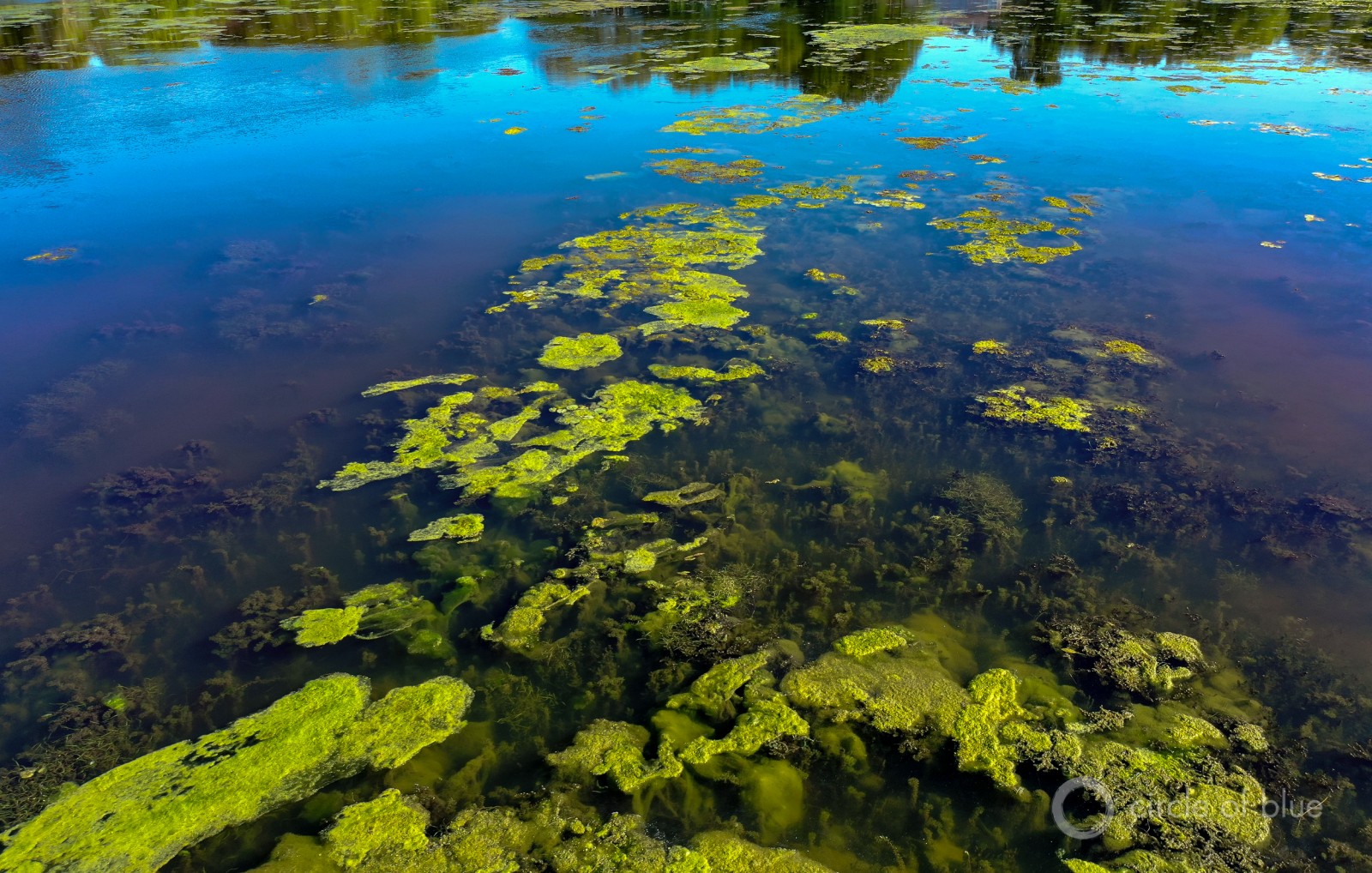The Stream, July 26, 2023: In Drought-Stricken Spain, Farmers Restore Ancient Irrigation Canals

Pollution from agriculture and leaky septic tanks has produced an excess of algae in Michigan’s Pine River. Photo © J. Carl Ganter / Circle of Blue
YOUR GLOBAL RUNDOWN
- Thousand-year-old irrigation systems are being excavated and restored in Spain amid extreme heat and water insecurity crises.
- A new modeling study predicts that 5.5 billion people worldwide could be exposed to polluted water by 2100, with the worst effects occurring in Sub-Saharan Africa.
- Heavy rains sweeping through Colombia have led to deadly landslides in the country’s central region.
- A junta-affiliated hydropower project in Myanmar is moving ahead, local activists say, despite details and safety plans being “shrouded in secrecy.”
Kolkata’s “kidney”-like wetlands are under threat from developers, residents say, putting biodiverse habitat in the Indian city at risk.
“We asked them not to convert the wetlands, not to trade these wetlands to buildings, not to get them filled.” — K Balamurugan, chief environment officer for West Bengal state.
Each day, more than 900 million liters of city sewage flow into Kolkata’s 48-square-mile low-lying wetlands, a habitat of global importance under the United Nations Ramsar Convention.
But this pollution is not as devastating as one might think. Instead, the nutrient-rich waste spurs the growth of microplankton — food for carp and tilapia, on whom the local community depends — before dispersing as an organic fertilizer into nearby rice paddies.
Today, this miraculous and natural wastewater treatment, on which 14 million people depend, is at risk, Al Jazeera reports. On the one hand, the pollution is getting worse. And on the other, land developers are increasingly eager to convert the wetlands — 95 percent of which are privately owned — into properties.
Residents and officials are imploring the wetland owners not to sell, and to withstand the influence of lucrative offers from developers. Healthy fish ponds, clean water, and irrigation systems are more important, they say.
— Christian Thorsberg, Interim Stream Editor
Recent WaterNews from Circle of Blue
- How Big Ag Pollutes America’s Waters and Makes Money Doing It – Crop production practices that limit nutrients are largely ignored.
- Workers Needed to Fulfill America’s Infrastructure Goals – Labor shortage could be a bottleneck as the country rebuilds.
The Lead
More than 1,000 years ago, the Moors built a complex network of irrigation canals that collected and distributed water to farmers and residents throughout Spain. Called acequias, the channels “made life possible in one of Europe’s driest regions,” the New York Times reports — until they fell out of use by the 1960s in favor of reservoirs.
Today, as the country confronts extreme heat and drought — and a future likely filled with much of the same — Spaniards are returning to the acequias, excavating and repurposing the historic infrastructure.
Acequias help collect snowmelt, slowly diverting water down high elevation ranges into aquifers. The water stored underground is drawn upon months later.
“The Moors didn’t just leave us the acequias, but also the landscape they created with them,” Elena Correa Jiménez told the Times.
More than 60 miles of acequias have been recovered so far, “taking motley groups of researchers, farmers, environmental activists and locals across the Alpujarra, gardening tools in hands.”
This Week’s Top Water Stories, Told In Numbers
14
Number of people killed amidst landslides in Quetame, a rural municipality just 40 miles outside Colombia’s capital, Bogotá. Heavy rains swept through the region this week, triggering mud avalanches that destroyed several homes and disrupted a central trade route. Emergency orders have remained in effect as search efforts continue for at least 20 people. During last year’s rainy season, Al Jazeera reports, 300 people were killed.
436 million
The cost, in U.S. dollars, of a new hydropower dam in Myanmar’s Shan state, Myanmar Now reports. The project, led by a “Wa army-linked company” in collaboration with the junta, is “shrouded in secrecy” and could place up to 20,000 residents downstream of the Namtu River in danger, a local activist organization has said. Myanmar remains one of the most dammed countries in the world.
On the Radar
Scientists from Utrecht University have mapped worldwide surface water quality in 2100 under three different climate scenarios. The results, published in the journal Nature Water, show that nearly 5.5 billion people could be exposed to polluted water by the end of this century, with Sub-Saharan Africa especially exposed. The models also predicted that “in many wealthy countries, levels of organic pollutants and substances that can cause disease tended to decrease, owing to improved water treatment.” Today, according to the United Nations, two billion people already struggle to gain access to clean water.
In context: Costs of Water Pollution, a Global Scourge, ‘Underestimated and Underappreciated’
More Water News
Paris rooftops: In Paris, where current infrastructure and urban planning is ill-adapted for extreme heat, rooftops and boulevards are becoming canvases for water-saving and plant-based projects, Yale Environment 360 reports.
New heights for mosquitos: New research points to mosquitos, which breed in water, gradually moving their populations to higher elevations around the world, Grist reports.
Brett writes about agriculture, energy, infrastructure, and the politics and economics of water in the United States. He also writes the Federal Water Tap, Circle of Blue’s weekly digest of U.S. government water news. He is the winner of two Society of Environmental Journalists reporting awards, one of the top honors in American environmental journalism: first place for explanatory reporting for a series on septic system pollution in the United States(2016) and third place for beat reporting in a small market (2014). He received the Sierra Club’s Distinguished Service Award in 2018. Brett lives in Seattle, where he hikes the mountains and bakes pies. Contact Brett Walton






Leave a Reply
Want to join the discussion?Feel free to contribute!